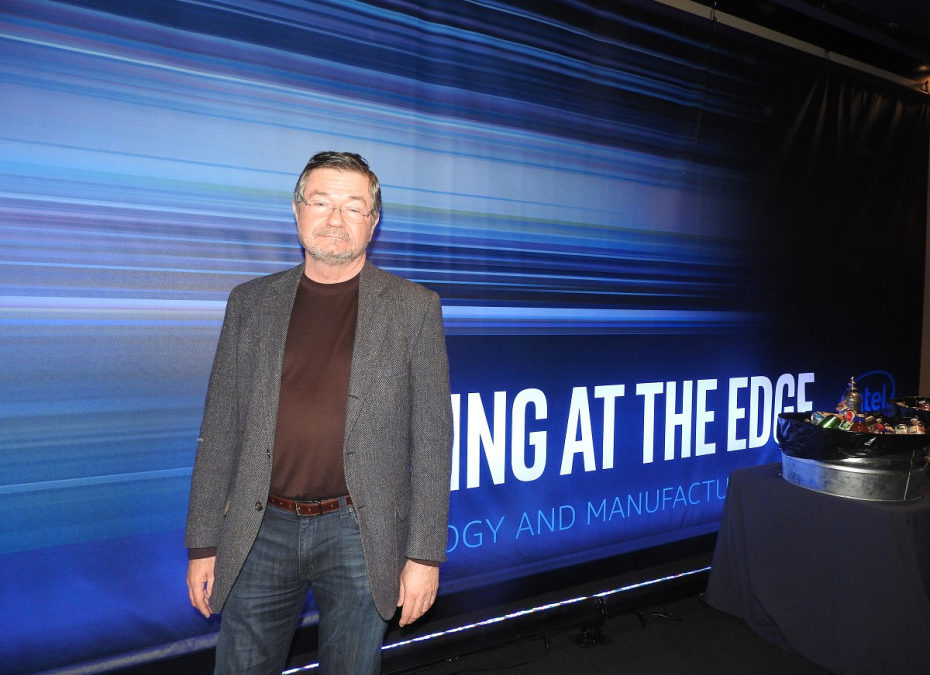
In the past couple of years, there were a lot of stories about how Moore’s Law was slowing down. That was a reason for financial panic, as it suggested that technological progress was slowing and that the global economy could suffer as a result.
Only it wasn’t really true. Gordon Moore, Intel’s chairman emeritus, predicted in 1965 that the number of transistors on a chip would double every couple of years. That prediction held up for decades, but it appeared to slow down as Intel became quiet about its progress. But last week, Intel disclosed that, while it took longer for the company to make its latest technological leap, it had miniaturized transistors for its 10-nanometer manufacturing at a better-than-expected level. And that meant Moore’s Law is on track.
Intel plans to shift from 14-nanometer manufacturing to 10-nanometer technology later this year. A nanometer is a billionth of a meter, and the number represents the distance between circuits in a chip. And Intel says that its manufacturing process is ahead of rivals such as Samsung, TSMC, and Global Foundries.
I caught up with Dan Hutcheson, CEO of VLSI Research, at Intel’s event. Hutcheson has been covering the chip industry for decades, and I bounced Intel’s assertions off him. Here’s an edited transcript of our conversation.

Image Credit: Dean Takahashi
VentureBeat: What do you think of the disputes over who’s ahead in 10-nanometer manufacturing?
Dan Hutcheson: We got away from these fictitious node names. That really dates back to the ‘90s. Before that everybody used dynamic random access memory (DRAM). I don’t know if anyone remembers that, but before we used DRAM. Then, when the Japanese came to dominate DRAM—okay, we’re not in DRAM, so how do we come up with something different that applies to us? That was when the nanometer node came. Although we called them microns back then. It was a while before we rolled over to nanometers.
VB: Does it make sense as far as what Intel has said, that they have this three-year lead? That their 14 nanometer is equivalent to what everyone else is calling 10 nanometer?
Hutcheson: Oh, yes. That’s the way it’s been for a long time now, since somewhere around 40 or 65. Intel really accelerated ahead of everyone. A few years ago they got a good node ahead, one or two nodes ahead, and then they started to slow a little bit as far as specific nanometers they were using.
VB: Everyone worried about the slowing of Moore’s Law at the time.
Hutcheson: That’s all BS. That’s all just people who can’t compete anymore, so they like to go out and talk about how Moore’s Law is dead. I’ve written two Scientific American articles addressing whether Moore’s Law is dead. One of them was in 1996. Another one was in 2005, I think, or 2003. It keeps coming back as a theme. Before we decided to shrink our library, I had this paper from 1968 that said Moore’s Law was going to die. Even Gordon himself, in a 1965 paper, said he thought it would only last into the ‘70s.
VB: It came into a lot of the strategy. AMD has been saying that because Moore’s Law is slowing, Intel doesn’t have as big a lead on them anymore on that front. When they pull ahead with better design, like zen, it makes a bigger impact now. They can say Intel can’t outmanufacture them. Or that’s their argument.
Hutcheson: AMD’s advantage has always been design. There was a time—if you go back to the 130 nanometer age, AMD’s gate lengths were tighter than Intel’s. That’s not true anymore. But the slowing is a fiction. The other thing people get into is—because of the node being a convention, the way people look at Moore’s Law moved from what my density of memory was, how many transistors I could put in a chip I could sell, to…

